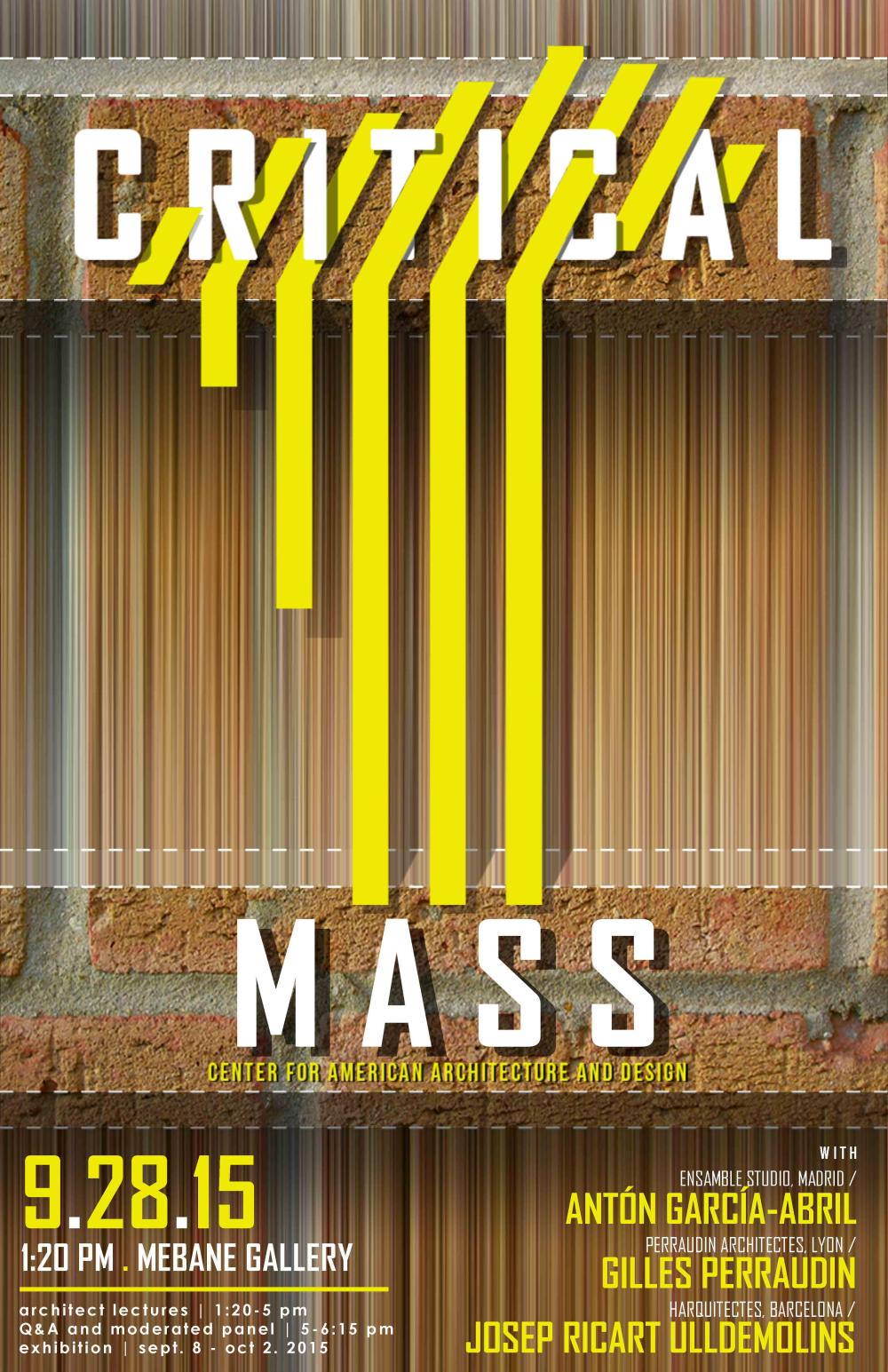CRITICAL MASS

1:20 pm Introductions
1:30 pm Josep Ricart Ulldemolins, Harquitectes, Barcelona
2:30 pm Gilles Perraudin, Perraudin Architectes, Lyon
3:30 pm Coffee Break
4:00 pm Anton Garcia-Abril, Ensamble Studio, Madrid
5:00 pm Q&A and Moderated Panel
6:15pm Reception
Buildings are heavy. The value of this simple circumstance can be difficult to appreciate in a culture that romanticizes the temporary and provisional, bolstered by an engineering zeitgeist founded squarely on the ideal of dematerialization, or achieving more with literally less. But there are many kinds of less.
The skill of architects exercising the sleight-of-hand that allows buildings to appear light or immaterial—with impossibly thin-edged surfaces or hovering volumes, seemingly detached from the ground upon which they bear—is both remarkable and well-documented.
The less addressed question in this phenomenon is not the how, but the why. It is difficult to understate the importance of abstraction in contemporary architecture culture. One explanation is that by suppressing the more obvious physical conditions of building, we are simply making room to foreground other architectural attributes. The projects of Critical Mass, however, dissuade one from this proposition. There are few practitioners more vigorously pursuing the abstract, yet the visceral power of these projects is undeniable. In this way, the examination of expressions of mass is also an investigation into the locus of abstraction in contemporary architectural practice.
In North America, the question of the design interrogation of substantive building is particularly relevant. In his essay “Lost Colony,” W.G. Clark contrasts the “insubstantial beauty [of] … thin shacks and sheds” with emplaced buildings where “it is hard to tell where the earth stops and the building begins.” The North American building culture, however, favors the former. We build with matchsticks.
Building design and building technique are not easily quarantined from one another. Nowhere is this more evident than in works of architecture that are massive, not necessarily in scale but in their literal substance. The focus of Critical Mass is on architectural work that derives expression, experience, and meaning in the native mass of building.
more information: caad@austin.utexas.edu, 512.471.9890

